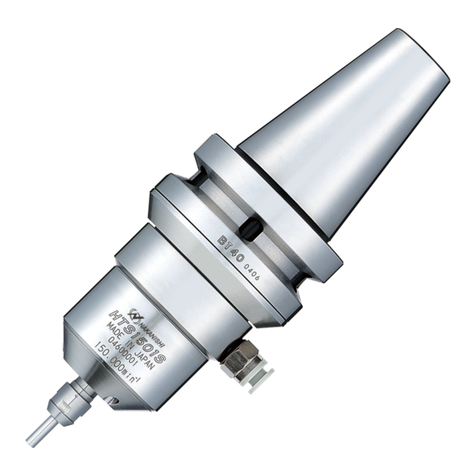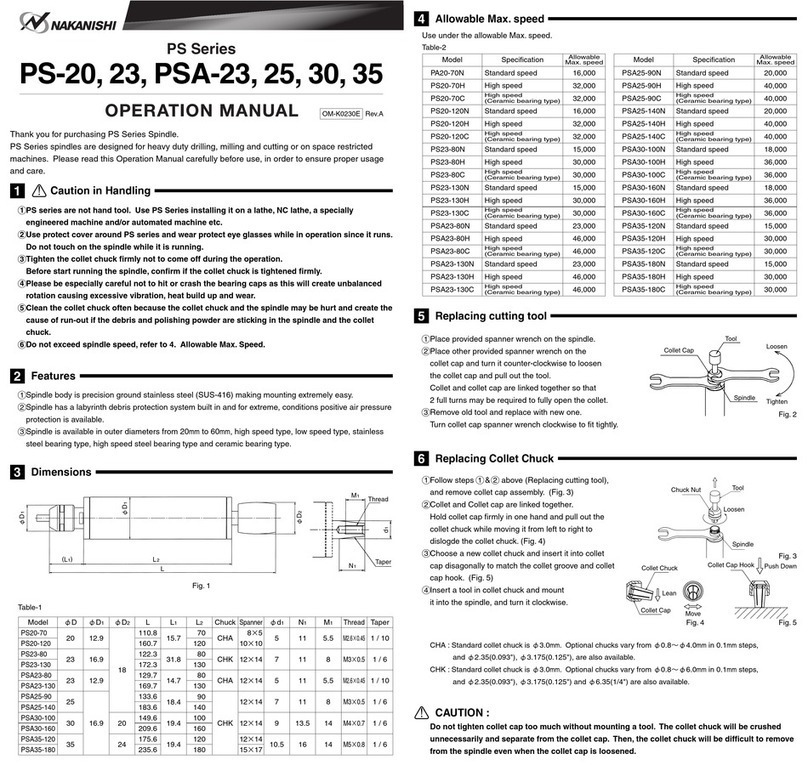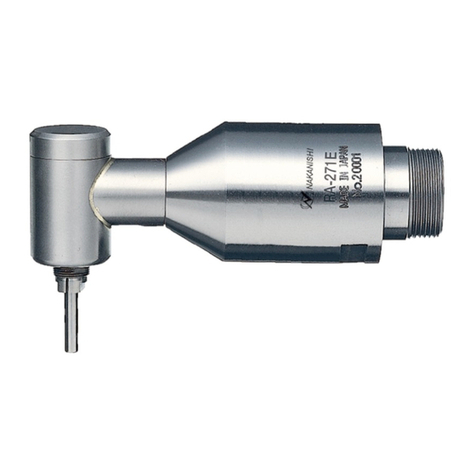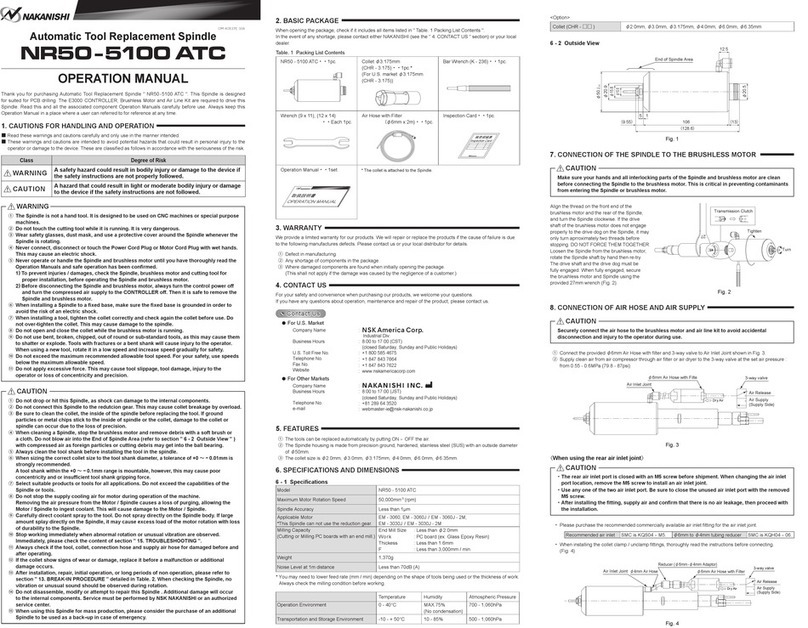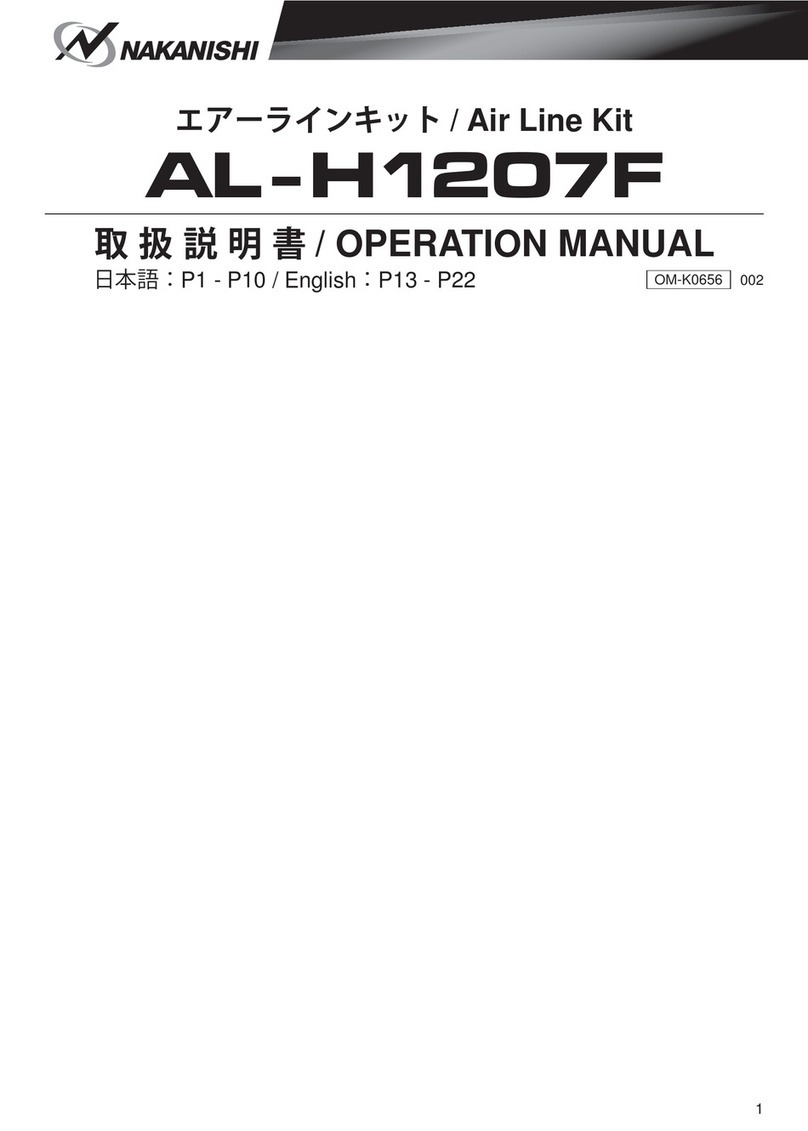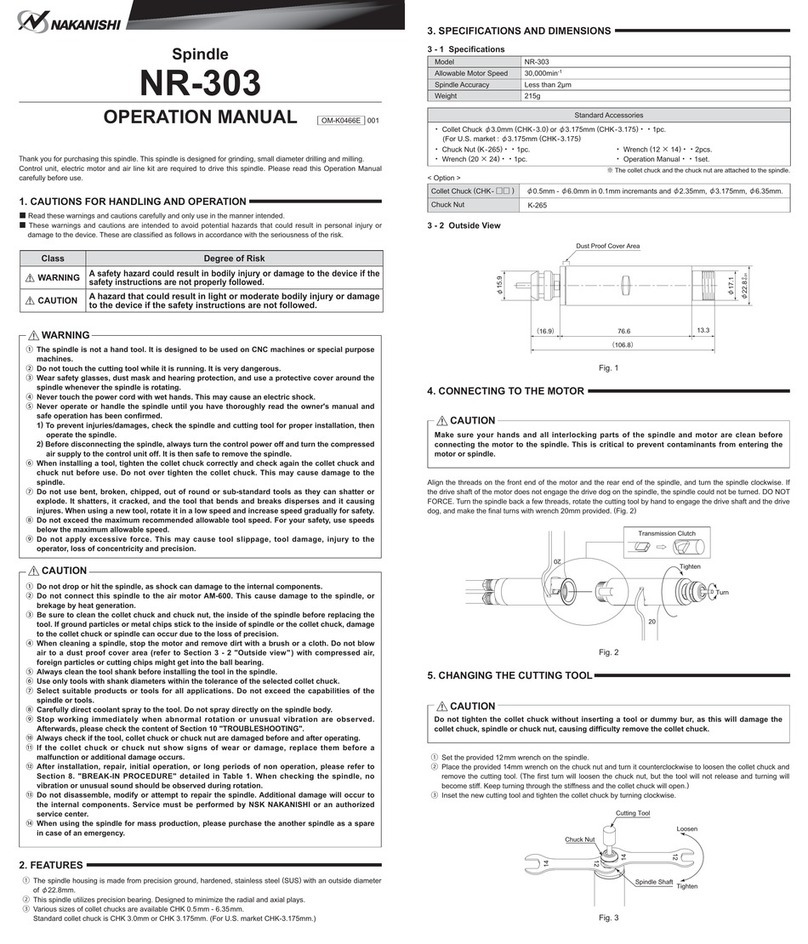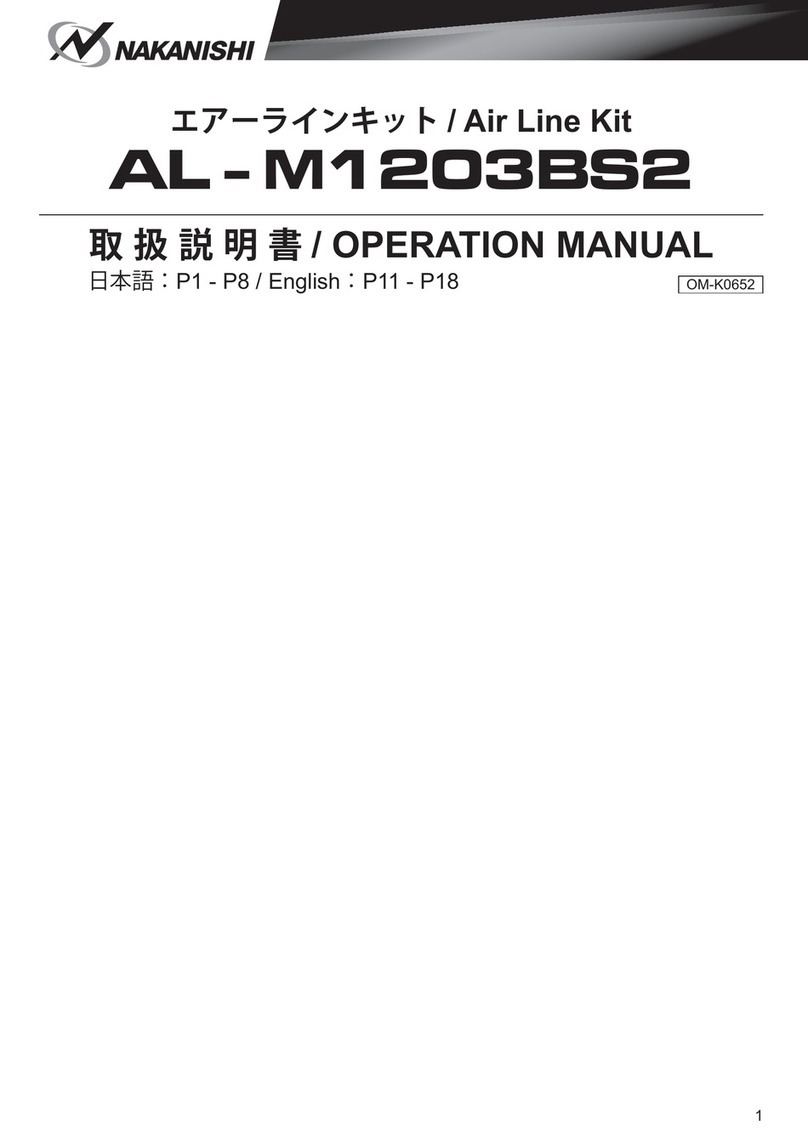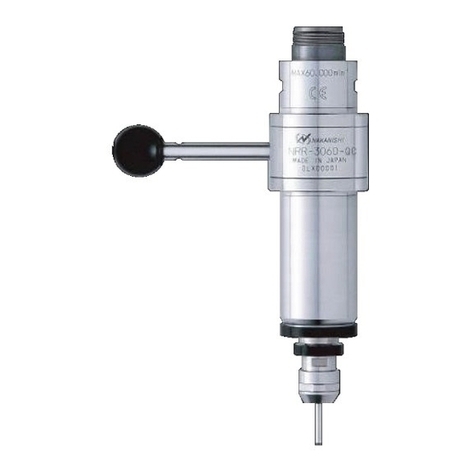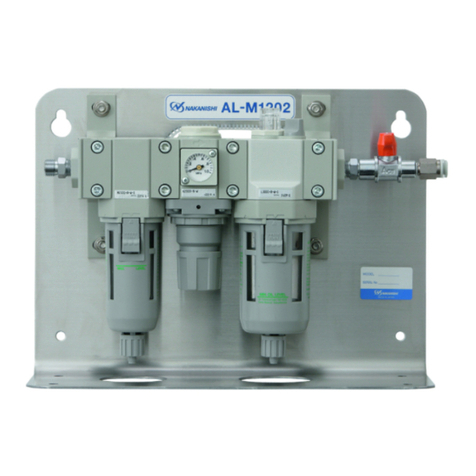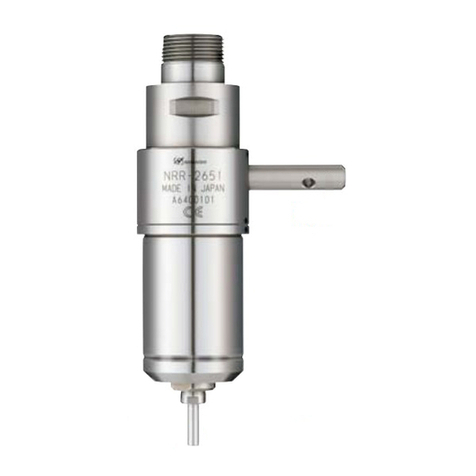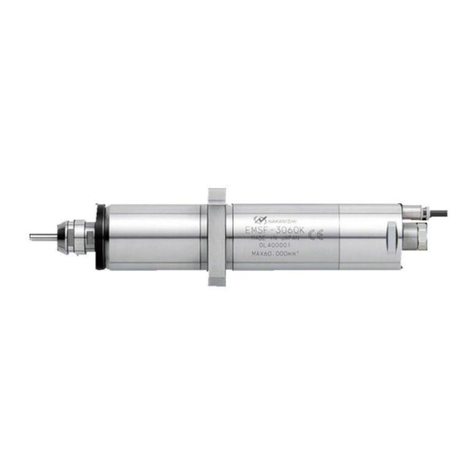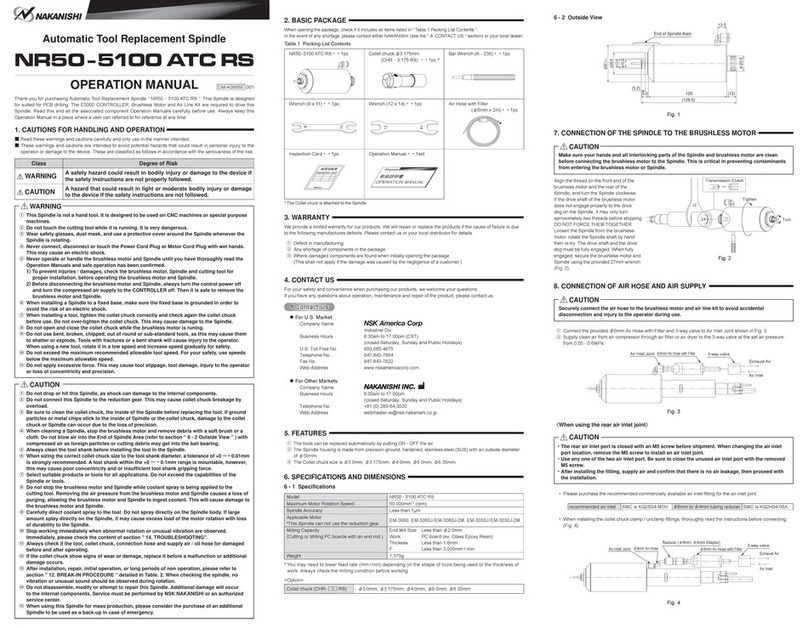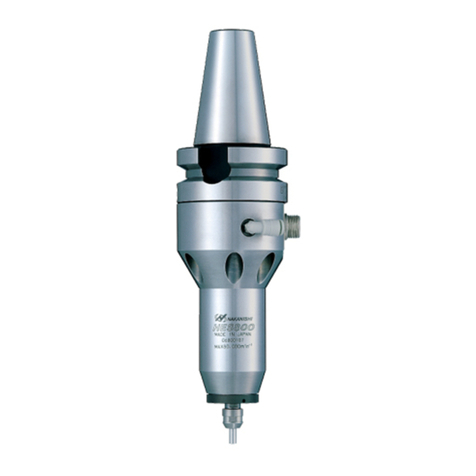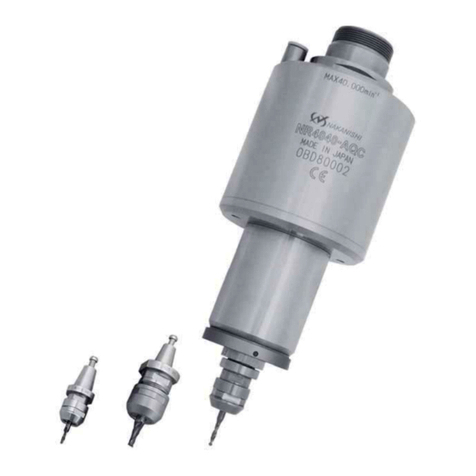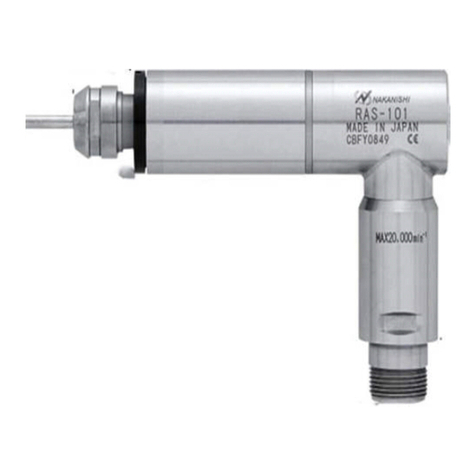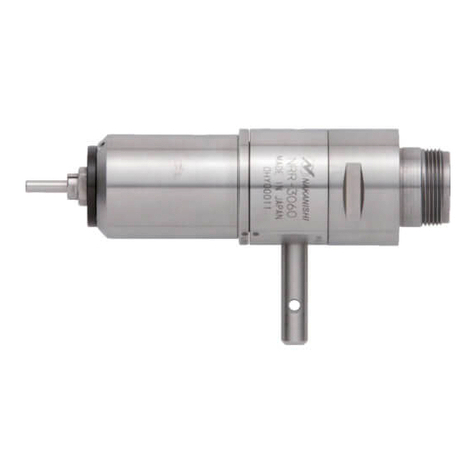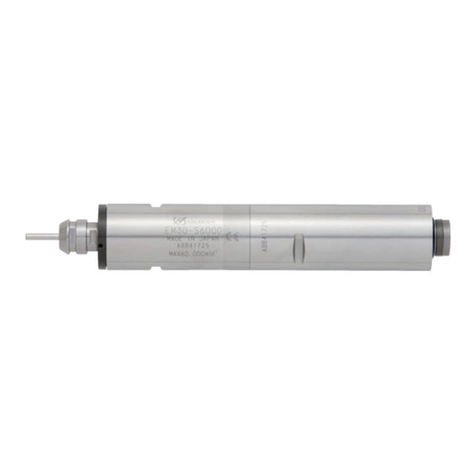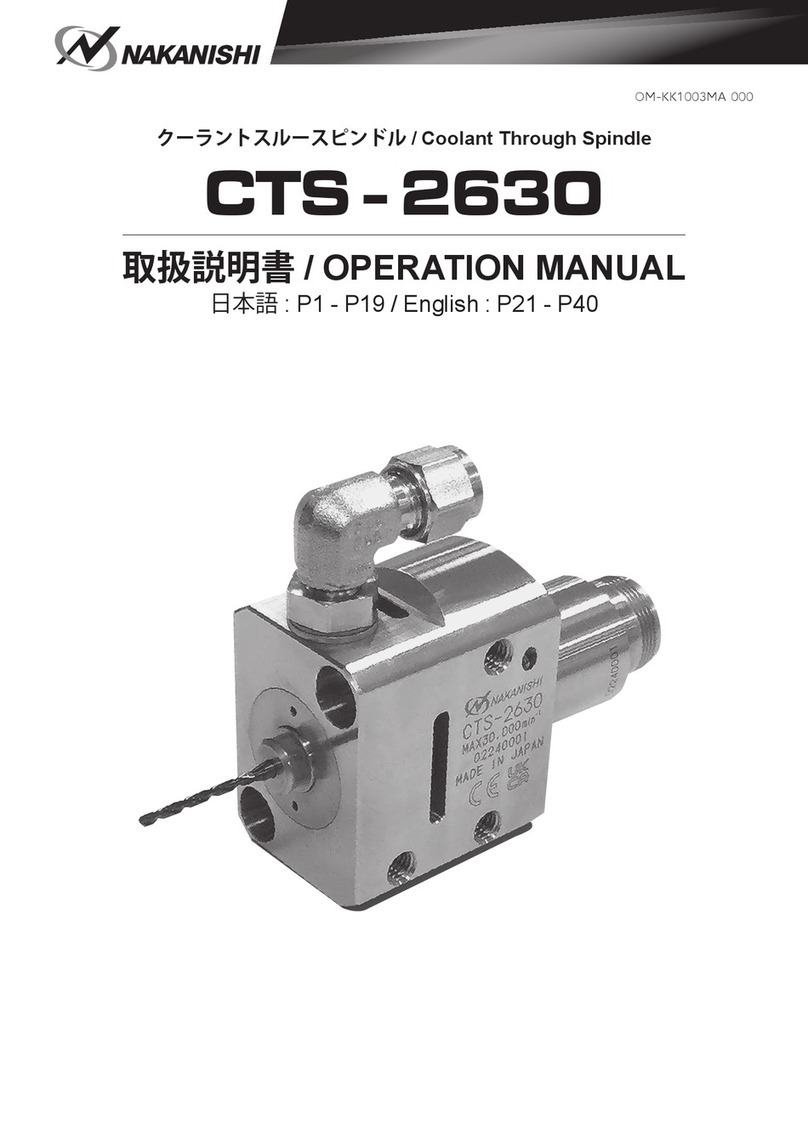
6. REPLACING THE COLLET CHUCK
①Remove the tool according to the section 5.
"CHANGING THE TOOL" procedure above
and remove chuck nut assembly (Fig. 5).
②The collet chuck and chuck nut are held
together by a groove in the collet chuck and a
flange in the chuck nut. To remove the collet
chuck hold the chuck nut in one hand and
push diagonally down on the collet chuck. The
collet chuck should pop out. (Fig. 6)
③Install the new collet chuck in the chuck nut
by positioning the collet in the chuck nut and
pressing down on a flat surface. (Fig. 6)
Tool
12
14
Chuck Nut
Spindle Shaft
Loosen
Collet Chuck
Wrench Seat
Chuck Nut
Push
Fig. 5
Fig. 6
7. INSTALLATION OF THE MOTOR AND SPINDLE
①When mounting the spindle, refer to the Clamping Area etched on the spindle. ( Fig. 7)
②The installation shown in Fig. 8 is the recommended fixturing method. If this is not possible, install as shown
in Fig. 9. Do not allow set screws to come directly in contact with the spindle body as shown in Fig. 10, as this
will result in damage to the spindle housing and internal components.
When mounting, never clamp directly over the bearings, as this will result in bearing damage.
・Advice when using split type holders and all similer types installation methods
Insert a shim into the holder bore, and tighten the bolt with minimal torque.
Manufacture the holder with roundness and cylindrical tolerance of less than 5μm.
Insert a thin shim into the split in the holder and reduce the shim size in 5μm increments until
spindle is held firmly.
Tighten the clamping bolt to the torque specified for that size and type of bolt.
The final responsibility for ensuring product's stability for use in a given application is left to
the designer of the equipment in which NAKANISHI's spindle is installed.
NAKANISHI offers spindles with a wide variety of capabilities and specifications.
Please carefully check the product's specifications against the requirements of your application
and verify suitability and safety prior to initial use.
RECOMMENDED
(Clamping Area)
3420
Fig. 7
Fastening Bolt Fastening Bolt Fastening Bolt
Fastening Bolt
Bushing with Slit
Slit of Bushing
Split Type Holder
㱢D
㱢D
㱢D
Slit
Fig. 8 Fig. 9 Fig. 10
Step 1234
NR-2532
NR-H2532
Rotation Speed (min-1) 5,000 10,000 20,000 30,000
Rotation Time (min) 10 10 10 15
NR-2551
NR-H2551
Rotation Speed (min-1) 15,000 30,000 40,000 50,000
Rotation Time (min) 15 10 10 15
Items to Check
No Abnormal
Noises
Spindle Housing no hotter than 20゚C.
If hotter than 20゚C stop for at least
20 minutes, check installation and
restart Break-In procedure.
Spindle Housing
less than 20゚C.
8. BREAK-IN PROCEDURE
During transportation, storage or installation the grease inside the bearings will settle. If the motor spindle is suddenly
run at high-speed excessive heat will cause bearing damage. After installation, repair, initial operation, or long periods
of non operation please follow the break-in procedure detailed in Table 1.
Table 1.
WARNING
In case of using the electric motor, when installing a spindle to a fixed base, make sure the fixed
base is grounded in order to avoid the risk of an electric shock.
CAUTION
・When installing a spindle, do not hit, drop or cause shock to the spindle. This may cause damage
to internal components and result in malfunctions.
・If the spindle is installed incorrectly, this will cause and damage to the spindle.
CAUTION
・Cautions when tightening the securing bolt
Do not over tighten the bolt. This may cause damage to spindle's precision.
Tighten the bolt until the spindle body can not be turn by hand within the fixture.
Extreme tightening is not necessary or recommended.
Apply working force and check that the spindle is tight before using.
Table 2. Overhang and Speed
Overhang (mm)Max. Speed (min-1)
20 N x 0.5
25 N x 0.3
50 N x 0.1
N=Max. Operating Speed with 13mm overhang.
Trouble Cause Inspection/Corrective Action
Spindle does not run.
The ball bearings are damaged. Replace the ball bearings.
(Return to NAKANISHI dealer service.)
Motor is broken. Replace the motor.
(Return to NAKANISHI dealer service.)
Overheating during
rotation.
Cutting debris has contaminated
the ball bearing, and the ball
bearings are damaged.
Replace the ball bearings.
(Return to NAKANISHI dealer service.)
Abnormal vibration or
noise during rotation.
Using bent tool. Replace the cutting tool.
Cutting debris has contaminated
the ball bearings. Replace the ball bearings.
(Return to NAKANISHI dealer service.)
The ball bearings are worn.
Tool slippage.
Collet chuck or chuck nut are not
correctly installed.
Check and clean the collet chuck and chuck nut.
And, tighten the collet chuck accurately again.
The collet chuck is worn. Replace the collet chuck.
High run-out.
The cutting tool is bent. Change the cutting tool.
Chuck nut is not correctly
installed.
Secure the collet chuck and the chuck nut
correctly.
The collet chuck is worn. Replace the collet chuck.
Inside of the spindle is worn. Replace the spindle shaft.
(Return to NAKANISHI dealer service.)
Contaminants inside the collet
chuck or the spindle.
Clean the collet chuck and the inside of the
spindle.
The ball bearings are worn. Replace the ball bearings.
(Return to NAKANISHI dealer service.)
①The proper surface speed for general grindstones is 600 -1,800m/min.
②Do not exceed 13mm of overhang for mounted grindstones as shown in Fig. 11. If the overhang must exceed
13mm, reduce the motor speed in accordance with Table 2.
③Dress the grindstone prior to use.
④Do not use cutting tools with bent or broken shanks, cracks or excessive run-out.
⑤For grinding, the maximum depth of cut should not exceed 0.01mm radially or axially. Reciprocate the tool
several times after each pass to eliminate tool pressure.
⑥Always operate tools within the allowable recommended speed of the tools. Use of a tool outside of the
allowable speed of the tools could cause damage to the spindle and injury to the operator.
⑦Keep the tool shank and collet chuck clean. If contaminants are left in the collet chuck or chuck nut, excessive
run-out will cause damage to the tool and or spindle.
⑧Do not strike or disassemble the motor spindle.
⑨Please set the tools to minimize the overhang amount. 13mm is the maximum amount of overhang to maintain
high accuracy and safety.
10. TROUBLESHOOTING
If a problem or concern occurs, please check the following prior to consulting your dealer.
3.14 x Diameter (mm)x Rotation Speed (min-1)
1,000
Surface Speed (m/min) =
9. CAUTIONS IN USING GRINDSTONES AND CUTTING TOOLS
CAUTION
The maximum surface speed or rpm is always specified for a grindstone. Do not exceed the
maximum speed with reference to the calculating chart below. Always follow the grindstone
manufacturers recommendations.
13
Fig. 11
2014.10.20 003
